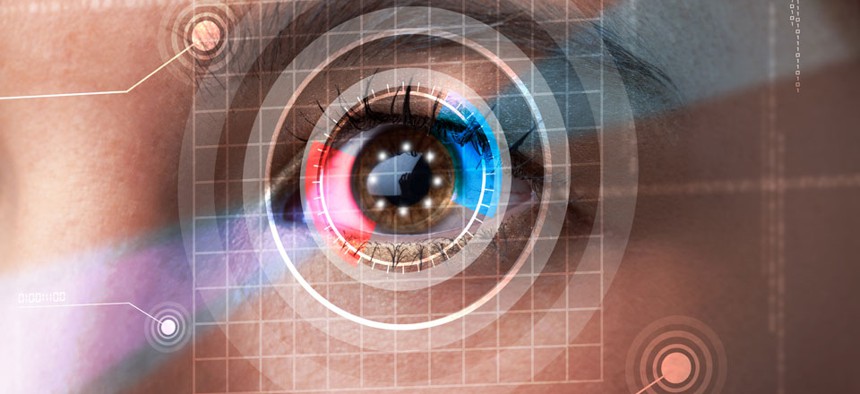New Facility Will Rehearse Foreigner Iris and Facial Recognition at Airport Exits

ra2studio/Shutterstock.com
Late 2015, DHS will deploy biometric tech to track visa overstays at a major U.S. airport.
The Department of Homeland Security has created a biometric-testing center to aid rollout of a long-awaited congressionally mandated system for tracking foreigners with invalid visas, DHS officials said Friday.
The goal of the Upper Marlboro, Maryland, facility is to help Customs and Border Protection expedite traveler screening at U.S. entry points and confirm that certain foreigners have departed the country.
DHS science, technology and law enforcement experts will spend the next eight to 12 months trying various approaches to capturing entry and exit data at airports. In late 2015, the department will deploy biometric exit technology at one of the top 10 U.S. airports, CBP officials told Nextgov.
The testing center currently is not looking at technology for pedestrian border crossings. CBP is in the process of determining the best southern port of entry to begin testing iris and face biometrics, agency officials said. They aim to initiate land exit work in 2015.
The center houses two Federal Inspection Stations -- an entry booth and gate departure area -- as well as other airport settings, to simulate real-world operations, DHS officials said.
The advantages of exit technology that taps digitized physical markers -- rather than merely textual biographic data -- are said to include timely and accurate identification and precise statistics on people with invalid visas.
The 25,000 sq.-ft. facility includes office, observation and testing space, officials said. It can accommodate up to 50 test subjects simultaneously.
Presently, there are logistical and technical challenges to setting up a biometric exit system.
Unlike with entry, airports and land crossings were not originally designed or staffed to process people who are departing. The airports, which the federal government does not operate, would need to be modified to accommodate new infrastructure.
“It is not feasible or responsible to install exit equipment in airports without a thorough evaluation of the potential impacts,” CBP officials state in a fact sheet on the new project. And facial and iris recognition tools have only recently matured to the point where they are reliable for widespread use. Fingerprint capture was tested and found to be more time consuming than the other two, less-intrusive biometric technologies.
Post-Sept. 11, 2001, legislation required DHS to create a biometric system for tracking foreigner entries and exits. The exit portion of the system never went into effect.
Republican legislators insist the government enforce border laws already on the books before Congress deals with other elements of immigration reform.
Inaction on an immigration overhaul currently leaves about 12 million undocumented immigrants in legal limbo.
On Thursday, House Judiciary Committee Chairman Bob Goodlatte, R-Va., told the Christian Science Monitor, that, in order to move on reforms, President Barack Obama must first, among other things, mandate employer verification of workers' legal status and establish a biometric exit and entry system.
But for now, biographic systems that use text, such as names and birthdates, offer many of the same benefits and are more developed than the crop of biometric machines available, according to a recent report by the Bipartisan Policy Center
Legislation approved in the Senate last year calls for a computerized biometric exit system that, according to the Los Angeles Times, could cost more than $7 billion.
(Image via ra2studio/Shutterstock.com)






